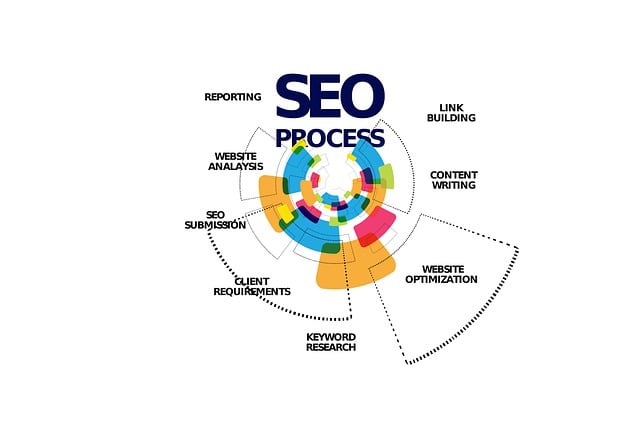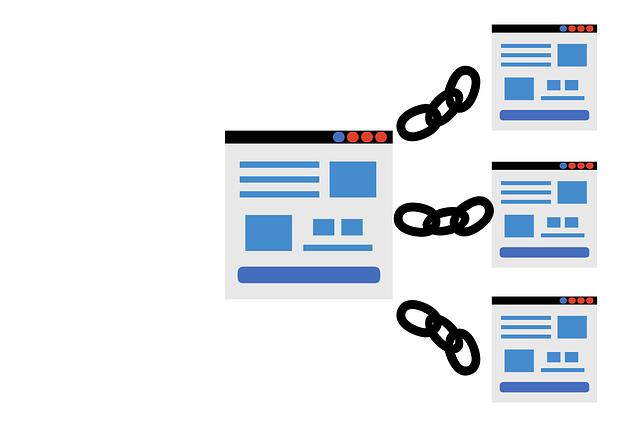Build High-Quality Backlinks for Better SEO
Here’s a comprehensive outline for an in-depth article on building high-quality backlinks for improved SEO rankings:
| Main Headings | Subtopics |
|---|---|
| 1. Introduction: Why High-Quality Backlinks Matter | – What are backlinks and why do they matter? – The role of backlinks in Google’s ranking algorithm – How high-quality backlinks differ from spammy ones |
| 2. Guest Blogging: A Timeless Strategy for Quality Links | – How guest posting works for backlinks – Finding high-authority sites for guest posting – Crafting high-value guest post pitches |
| 3. The Skyscraper Technique: Creating Link-Worthy Content | – Understanding the Skyscraper technique – Identifying popular content with backlinks – Improving existing content to earn more backlinks |
| 4. Broken Link Building: A Win-Win Strategy | – What is broken link building? – How to find broken links on authority websites – Replacing broken links with your content |
| 5. HARO (Help a Reporter Out): Earning Authority Backlinks | – How HARO connects experts with journalists – Best practices for crafting HARO pitches – Tips for getting featured in high-authority publications |
| 6. Leveraging Infographics for Easy Backlinks | – Why infographics attract backlinks – Designing compelling and shareable infographics – Promoting infographics for maximum exposure |
| 7. Competitor Backlink Analysis: Reverse Engineering Success | – How to analyze competitors’ backlink profiles – Using tools like Ahrefs and SEMrush – Outreach strategies for earning similar backlinks |
| 8. Internal Linking: Strengthening Your Own SEO Foundation | – Difference between internal and external links – Best practices for effective internal linking – How internal links influence search rankings |
| 9. Social Media & Community Engagement for Backlinks | – How social media boosts link-building efforts – Engaging with niche communities for natural backlinks – Using LinkedIn, Reddit, and Quora to generate links |
| 10. Building Backlinks Through Resource Pages & Directories | – How resource pages work for backlinks – Finding the right directories for your niche – Crafting a compelling request for link placement |
| 11. FAQs About Backlink Building | – How many backlinks do I need to rank on Google? – Is it safe to buy backlinks? – How long does it take for backlinks to impact rankings? |
Now, let’s dive into the full article and explore these strategies in detail!
1. Introduction: Why High-Quality Backlinks Matter
Backlinks are one of the strongest ranking factors in SEO. When authoritative websites link to your content, search engines interpret it as a signal of trust and credibility. However, not all backlinks are beneficial. High-quality backlinks come from relevant, authoritative, and trustworthy sources, while low-quality links can hurt your rankings.
What Makes a Backlink High-Quality?
✅ Comes from an authoritative website (high DA/DR)
✅ Is contextually relevant to your content
✅ Uses natural anchor text
✅ Is placed within the content, not in the footer/sidebar
Now, let’s explore 10 proven strategies to build high-quality backlinks that improve your search rankings.
2. Guest Blogging: A Timeless Strategy for Quality Links
Guest blogging is one of the most effective and scalable ways to earn quality backlinks. By writing valuable content for high-authority websites, you can gain exposure, credibility, and backlinks.
How to Do Guest Blogging the Right Way
🔎 Find reputable blogs in your industry using search queries like:
- “Write for us + [your niche]”
- “Guest post guidelines + [your topic]”
📩 Pitch high-quality, unique content ideas.
📝 Write well-researched, non-promotional articles.
🎯 Include a natural backlink in the content or author bio.
3. The Skyscraper Technique: Creating Link-Worthy Content
The Skyscraper Technique is a method to outperform existing high-ranking content and attract backlinks.
How It Works
1️⃣ Find popular content with many backlinks (use Ahrefs or BuzzSumo).
2️⃣ Create a better version – more in-depth, updated, and visually appealing.
3️⃣ Reach out to websites linking to the old content and suggest your improved version.
This strategy works because people want to link to the best possible resource.
4. Broken Link Building: A Win-Win Strategy
Websites naturally develop broken links over time. Broken link building involves finding these dead links and suggesting your content as a replacement.
Steps to Find & Fix Broken Links
🔎 Use tools like Ahrefs’ Broken Link Checker or Check My Links (Chrome Extension).
📩 Contact the site owner and politely suggest your content as a replacement.
🚀 Gain quality backlinks while helping website owners fix their errors!
5. HARO (Help a Reporter Out): Earning Authority Backlinks
HARO (Help a Reporter Out) connects journalists and bloggers with expert sources. By responding to journalist queries, you can get featured on major news sites like Forbes, The New York Times, and Business Insider.
How to Get Featured on HARO
📩 Sign up at helpareporter.com.
🔎 Choose relevant queries in your niche.
📝 Provide unique, expert-level responses with supporting data.
🚀 Earn backlinks from high-authority media sites.
6. Leveraging Infographics for Easy Backlinks
Infographics are visually appealing, shareable, and easy to link to.
How to Use Infographics for Link Building
✔ Design a high-quality infographic using Canva or Piktochart.
✔ Embed it in a blog post with a share code.
✔ Reach out to bloggers and offer free infographic use in exchange for a backlink.
This method attracts natural backlinks from bloggers and publishers.
7. Competitor Backlink Analysis: Reverse Engineering Success
Analyzing competitor backlinks can help you identify easy link opportunities.
How to Find Competitor Backlinks
🔎 Use Ahrefs, SEMrush, or Moz to analyze competitor backlinks.
📩 Reach out to the same sites and offer better content.
🚀 Gain backlinks from already interested sites in your niche.
8. Internal Linking: Strengthening Your Own SEO Foundation
Internal linking helps distribute SEO value across your website.
Best Practices for Internal Links
📌 Use descriptive anchor text with relevant keywords.
📌 Link to your most valuable pages.
📌 Keep internal links natural and user-friendly.
A strong internal linking strategy improves crawling, indexing, and rankings.
9. Social Media & Community Engagement for Backlinks
Although social media links are NoFollow, they drive engagement and visibility, leading to more organic backlinks.
Platforms That Help with Backlink Building
✔ LinkedIn & Twitter – Connect with influencers and share content.
✔ Reddit & Quora – Answer questions and subtly link to valuable resources.
✔ Facebook Groups & Forums – Participate in discussions and share insights.
10. Building Backlinks Through Resource Pages & Directories
Many websites maintain resource pages and directories that link to high-quality content.
How to Get Listed on Resource Pages
🔎 Find resource pages in your niche (Google search: “best resources for [topic]”).
📩 Contact webmasters and politely request inclusion.
🚀 Earn backlinks from authoritative sites in your field.
FAQs About Backlink Building
Before wrapping up, let’s address some of the most common questions about backlinks and link-building strategies.
1. How Many Backlinks Do I Need to Rank on Google?
There’s no fixed number of backlinks required to rank #1 on Google. The quality, relevance, and authority of backlinks matter more than quantity. A few high-quality backlinks from authoritative sites can outweigh hundreds of low-quality links.
2. Is It Safe to Buy Backlinks?
No, buying backlinks is against Google’s Webmaster Guidelines. Google’s algorithms, like Penguin, can detect paid and spammy links, leading to penalties or deindexing. Instead, focus on natural, white-hat strategies to acquire links.
3. How Long Does It Take for Backlinks to Impact Rankings?
SEO is a long-term strategy, and backlinks take time to show results. Depending on competition and the authority of the linking site, it can take several weeks to a few months for Google to recognize and credit a backlink.
4. Can Social Media Help with Backlink Building?
While social media links are typically NoFollow, they still help indirectly by increasing content visibility. When shared widely, they attract natural backlinks from other websites and blogs.
5. Should I Disavow Bad Backlinks?
If your site has spammy or toxic backlinks, you should use Google’s Disavow Tool to prevent penalties. However, disavow only when necessary, as Google’s algorithm can often ignore low-quality links naturally.
6. What Are Some Free Backlink Checker Tools?
Some free tools for analyzing your backlink profile include:
- Google Search Console (limited data but free)
- Ahrefs Backlink Checker (free version available)
- Moz Link Explorer (limited free usage)
- Ubersuggest (basic backlink analysis)
Final Thoughts
Building high-quality backlinks takes time and effort, but these 10 proven strategies will help boost your SEO rankings and authority. Start implementing them today and watch your website’s traffic grow! 🚀
Whether you’re leveraging guest blogging, broken link building, HARO, or social engagement, these proven strategies will help improve your rankings and drive organic traffic.
Key Takeaways:
✔ Quality over quantity – Focus on authoritative and relevant backlinks.
✔ Diversify your backlink sources – Use multiple strategies to build a natural link profile.
✔ Stay updated with Google algorithms – Avoid black-hat techniques to prevent penalties.
By consistently applying these 10 proven strategies, you can improve your SEO, increase website authority, and outrank competitors in search results. 🚀






